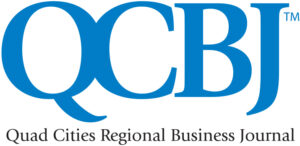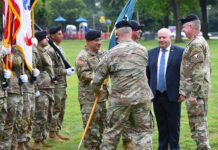Just weeks after striking John Deere UAW members returned to work, they joined UAW members across the nation in electing to change the way their top union leadership is selected for the first time in 86 years.
The referendum to make the change was conducted under the direction of a court-appointed monitor. Just 14% of an estimated 1 million total active and retiree members participated in the mail-in voting process. Those voting included Deere UAW workers from across Illinois, Iowa and Kansas.
The “one member, one vote” measure was approved overwhelmingly by 63.7% of the 140,586 valid ballots received by the Dec. 1 mail-in deadline, according to court monitor Neil Barofsky’s website. (The site also includes a list of vote totals for every union local.)
As a result of the mail-in balloting, top leaders of the labor union – beginning in 2022 – will be elected directly by members rather than by convention delegates. Under the old system, rarely were there contested races for seats on the 13-member International Executive Board.
For most of its history, UAW directors and officers were slated by officials within the UAW’s local chapters, not directly by rank-and-file members. Critics have long argued that serious challenges to the status quo rarely materialized because outgoing leaders handpicked their own successors.
What’s next?
Mr. Barofsky said he will confer with the UAW to draft amendments to the UAW constitution incorporating the change. That will include developing “the election rules and methods that will be used for the new direct-election system.”
He also will review “all candidates for International Office (International President, International Secretary-Treasurer, International Vice-Presidents, and Regional Directors) to determine whether any such candidate should be disallowed from office because they have been previously found guilty of certain types of conduct in a criminal or disciplinary hearing, or because they are a ‘barred person’ as defined by the Consent Decree.”
Shortly after UAW members opted for direct elections last week, the UAW released a statement that said, in part, “the International Executive Board will begin the process of working in unity with members, local unions and the Monitor in drafting the Constitutional changes, and implementing policies under this new method of direct election of officers and regional directors.”
The changes will be adopted by delegates to the 38th UAW Constitutional Convention to be held next July in Detroit. “We are, and always will be, one union. We move forward together In Solidarity,” the leader said.
Will it matter?
What impact, if any, direct elections will have on the competitiveness of future UAW leadership elections remains to be seen, said Paul Iverson, a labor educator at the University of Iowa.

“Ultimately, members are the union, so if they get to decide how they are governed, that’s good,” he said. And, if rank-and-file UAW members become more involved in their union that’s a good thing, as well, he added.
But direct elections could present their own challenges. For example, campaigns designed to reach large numbers of the 397,000 UAW members eligible to vote in the United States and Canada could prove to be too expensive for would-be challengers.
Name recognition could play a significant role in such elections, Mr. Iverson said. If that’s the case, candidates who want to make a serious bid would need to conduct costly political election-type campaigns employing such methods as direct mail and social media, to get their message across.
The low turnout in the Dec. 1 election that will put leadership decisions in union members’ hands also raises questions about whether rank-and-file members will take advantage of the opportunity to choose the International Executive Board, Mr. Iverson said.
Many of the variables likely to come into play when member vote in a direct election will be set out by the UAW and Mr. Barfosky, who was appointed May 12 by the U.S. District Court Judge in Michigan to be the independent monitor of the International Union, United Automobile, Aerospace and Agricultural Implement Workers of America. The decision was part of the consent decree between the government and the UAW.
The Dec. 1 referendum Mr. Barofsky monitored came in response to a five-year-long federal corruption investigation. The probe led to the conviction of 15 people, including two former UAW presidents and a lead labor negotiator for Fiat Chrysler Automobiles. The disgraced leaders were charged with misspending millions of dollars that were supposed to go to worker retraining.
The direct-election referendum was called as part of a settlement that allowed the UAW to avoid a government takeover similar to the three-decades-long federal oversight of the International Brotherhood of Teamsters. The federal court consent decree that created the takeover included a provision requiring direct election of leadership. Oversight of the Teamsters ended relatively quietly on Feb. 17, 2020.




